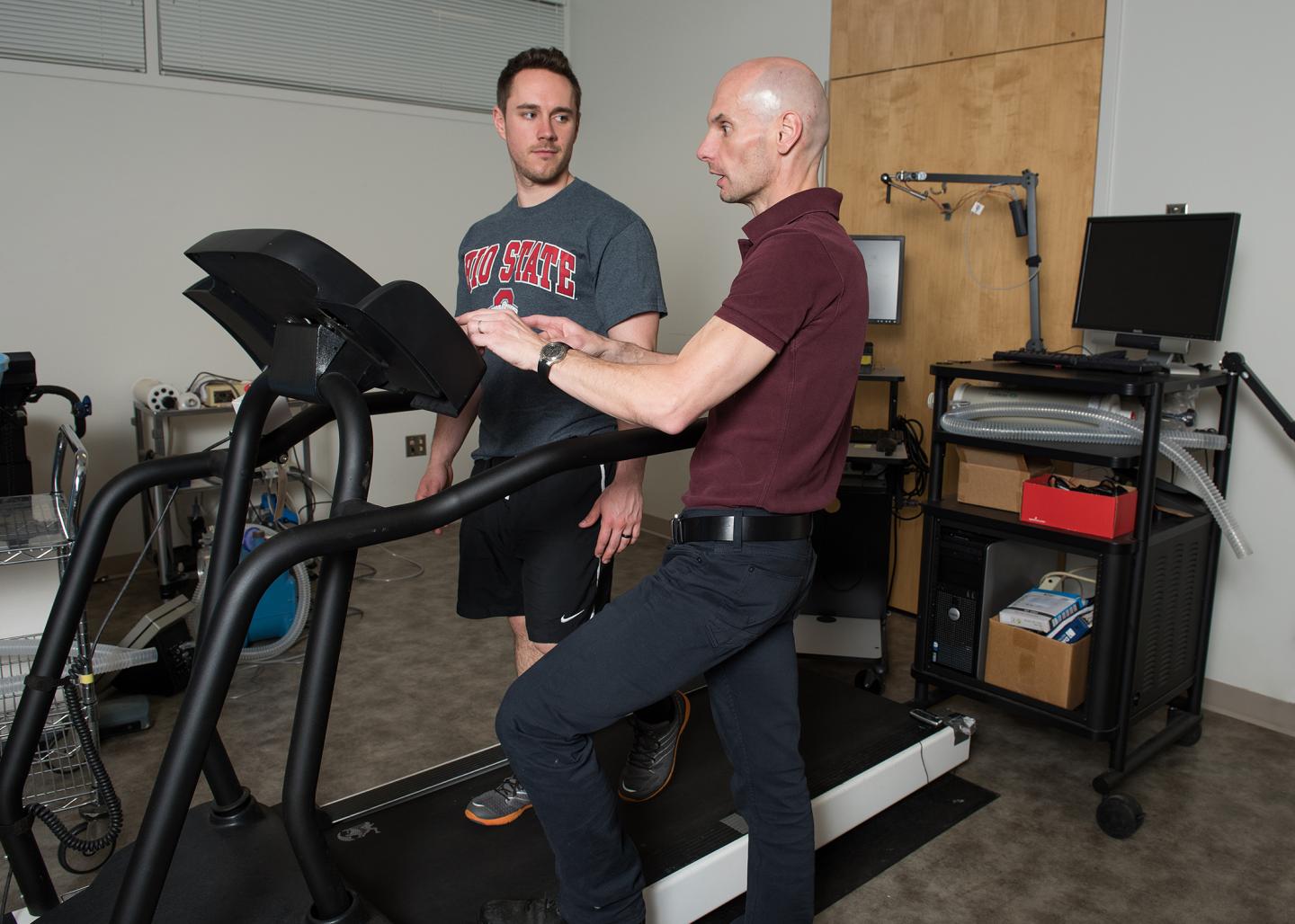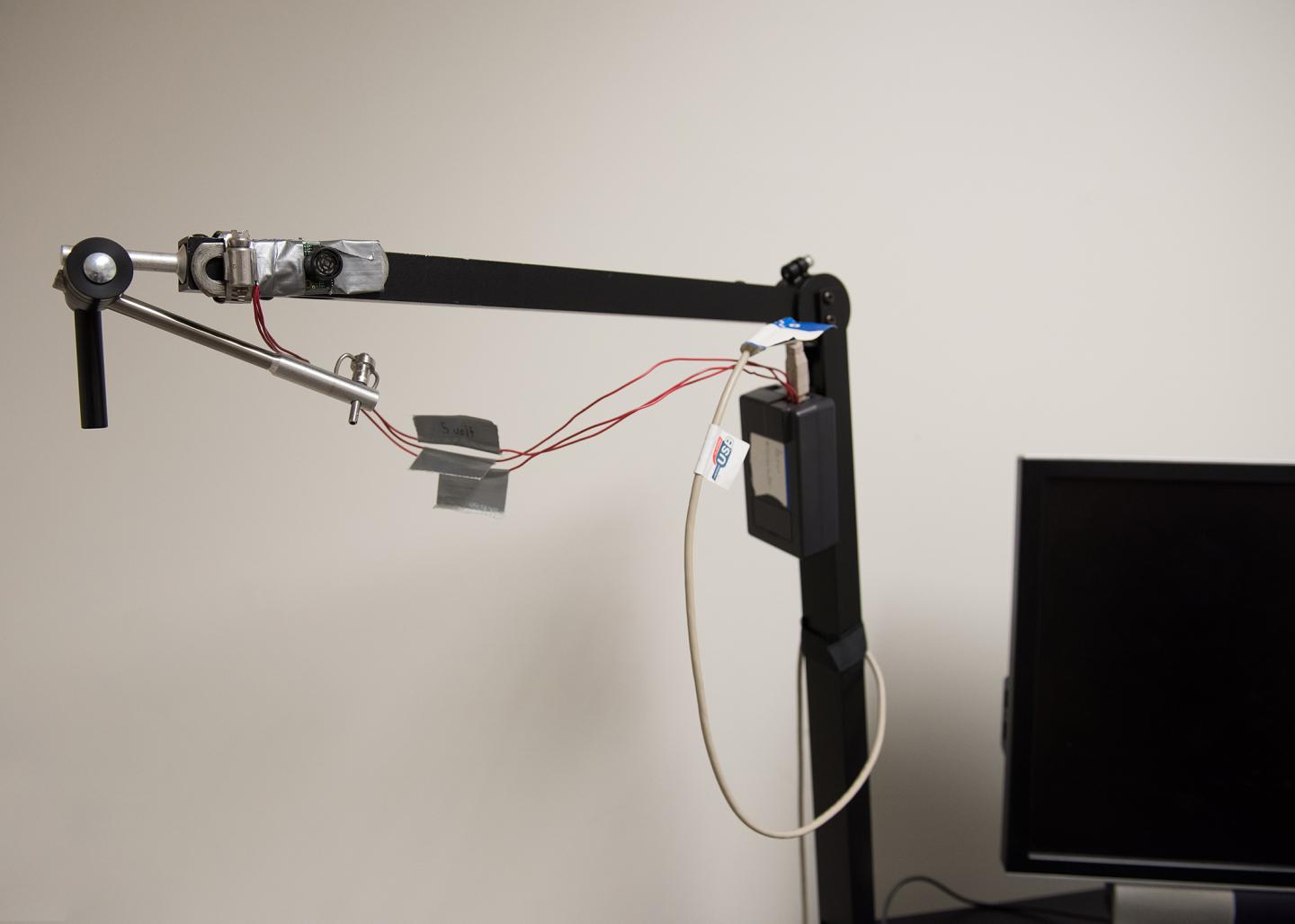You step onto the treadmill. You fiddle with a few buttons and pick up some speed. Now you’d like to pick up the pace a bit more and indulge in a light jog— you fiddle with some more buttons. If you want to speed up or slow down you have to adjust manually.
Ohio State University researchers have developed a new treadmill that automatically changes speed to match the pace of a runner as if he or she was jogging outside.

“If you're running outside and you want to speed up or slow down, there is no button to push. It is the same with this new automated treadmill,” said Steven T. Devor, associate professor of kinesiology at The Ohio State University.
The treadmill uses sonar to detect the runner’s position on the treadmill so if the runner picks up pace and moves toward the front of the belt, the speed automatically increases and if the runner slows down (moves toward the back) belt speed decreases.
 This sonar device is placed behind the treadmill to measure where the runner is on the running belt.
This sonar device is placed behind the treadmill to measure where the runner is on the running belt.
(Image via Ohio State University)
Instead of participating in a boring and monotonous treadmill routine, users can have a much more natural running experience so they can run at whatever pace they’d like.
The team used a sonar range finder, used to measure the distance between an object and sonar device and attached it to a microcontroller and computer that were linked to the treadmill.
The sonar is set up behind the treadmill and aimed at the user’s back so that when the person is running in the middle of the belt the speed of the treadmill will stay the same, but if the sonar senses that the runner is moving farther away (picking up speed), the microcontroller sends a signal to the treadmill to speed up the belt in increments. The speed increases until the runner is again detected in the center of the belt.
“It is all seamless and the runner doesn't even know that it's happening,” said Devor.
The team of researchers has completed a prototype and it is almost ready for commercialization.
Story via Ohio State University.
Advertisement
Learn more about Electronic Products Magazine





